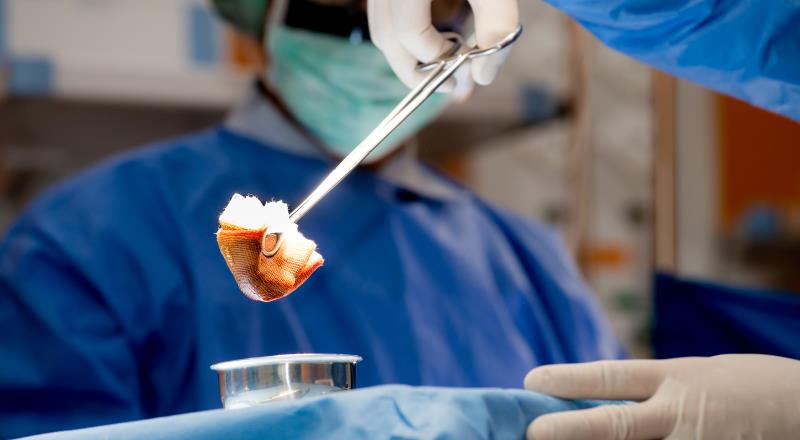Skin prep type has no effect on SSI in gynae laparoscopy





Type of pre-operative skin preparation solution – alcohol-based chlorhexidine or alcohol- or water-based povidone iodine – had no bearing on the risk of surgical site infection (SSI) in women undergoing gynaecological laparoscopy, according to a study conducted in Australia.
“No skin preparation solution provided an advantage compared with the other solutions in reducing infection rates,” stated the researchers.
“[B]ecause the type of skin preparation does not affect rates of SSIs, exploring other methods [such as routine bathing or cleaning, specific preparation of the umbilicus, and antibiotic prophylaxis protocols] to reduce SSIs in patients undergoing gynaecological laparoscopies is warranted,” they said.
This single-centre, double-blind study involved 661 adults who underwent elective operative laparoscopy for non-malignant gynaecological disorders. They were randomized 1:1:1 to either abdominal preparation with alcohol-based chlorhexidine (plus vaginal and vulvar preparation with water-based chlorhexidine), abdominal preparation with alcohol-based povidone-iodine (plus vaginal and vulvar preparation with water-based chlorhexidine), or abdominal, vulvar, and vaginal preparation with water-based povidone-iodine. Of these, 640 were included in the analysis (mean age 36.2 years).
Most procedures (75.0 percent) required the use of three or four ports. The main reason for surgical procedures was endometriosis (57.8 percent). Patients were scheduled for hospital follow-ups at 1 week and 4 weeks post-surgery; most infections (61.5 percent) were detected at the first visit.
Thirty days post-surgery, the overall rate of any SSIs was 16.3 percent, while port-site infection occurred in 10.2 percent of the patients and organ or space infection in 6.6 percent. [JAMA Surg 2020;doi:10.1001/jamasurg.2020.1953]
The risk of port-site infection was higher among those whose skin was cleaned with alcohol-based chlorhexidine compared with water-based povidone-iodine (odds ratio [OR], 1.13, 95 percent confidence interval [CI], 0.61–2.08) or alcohol-based povidone-iodine (OR, 1.34, 95 percent CI, 0.71–2.52). [JAMA Surg 2020;doi:10.1001/jamasurg.2020.1953]
The risk of port-site infection was also increased among those whose skin was cleaned with water-based povidone-iodine compared with alcohol-based povidone-iodine (OR, 1.19, 95 percent CI, 0.62–2.27).
The risk of total or specific SSI type did not significantly differ regardless of type of pre-operative preparation used, be it iodine- vs chlorhexidine-based solutions (OR, 1.21, 95 percent CI, 0.79–1.89) or alcohol- vs water-based solutions (OR, 0.96, 95 percent CI, 0.61–1.50).
The researchers also identified risk factors for the different types of infection. For instance, history of SSIs was linked to an increased risk of any SSIs (OR, 4.75; p<0.001), any organ or space infection (OR, 3.99; p=0.005), and urinary tract infection (UTI; OR, 4.82; p=0.004). Older age was tied to an increased UTI risk (OR, 1.05; p=0.006), while BMI was tied to incisional infections and any SSI (OR, 1.07 for both; p=0.001 and p<0.001, respectively). Patients who underwent total laparoscopic hysterectomy had an increased risk of any organ or space infection (OR, 4.17; p=0.007) and endometriosis and vault infections (OR, 25.47; p=0.01). Patients with cardiometabolic disorders had an increased risk of organ or space infection (p=0.007), UTIs (p=0.02), and any SSIs (p=0.001).
Fifteen intraoperative complications occurred, with no difference between the different skin preparations (2.4, 1.4, and 2.3 percent of patients in the alcohol-based chlorhexidine, alcohol-based povidone iodine, and water-based povidone-iodine groups, respectively; p=0.42).
According to the researchers, the clinically diagnosed SSI rate was higher than anticipated, and was primarily due to “incisional infections at the umbilical port site.”
“Although the clinical effect of SSIs after laparoscopic surgery might be lower than that of open surgical procedures, infection still causes major discomfort to the patient and poses a significant economic burden,” they said, calling for multicentre studies to assess the generalizability of the findings.